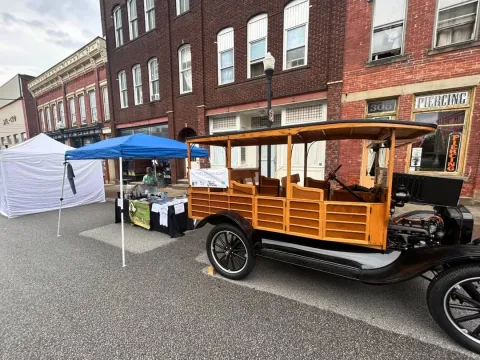Meadville
Meadville's prosperous history has its roots in a humble colony known as "Mead's Settlement." In 1778, the first settlers arrived at the present site of Meadville. Among the first settlers was David Mead and his three brothers. Ten years later, the first wives and families arrived. However, town development was hampered by Indian hostilities. It was not until June 3, 1795, that the last demonstration of Indian hostility in the county was recorded.
In 1800, Crawford County was created from Allegheny County, and Meadville became a regional center where courts of justice served for many nearby newly created counties, including Erie, Mercer, Warren, and Venango. However, this has changed since Meadville is the county seat of Crawford County. The City was a major center of settlement, government, business, and industry from the turn of the 19th century to the early 20th century.
Many spin-offs of prior industrial "boom" years exist today. The Meadville Area is known nationwide for its skilled craftsmen who work in the tool and die industry. This craft was based on the production of Talon "zippers," which began in Meadville and is now known worldwide.
A significant portion of Meadville's quaint business and shopping district was placed on the National Register of Historic Places in 1984. The Meadville Downtown Historic District is the nucleus of Meadville's settlement and development, reflecting a century of growth in county government, commerce, and industry. The Historic District features a diverse concentration of architectural styles spanning from the early 1800s to 1940. Of interest in Meadville's Historic District is the Unitarian Church in Diamond Park, built in 1835. The church is a fine example of Greek Revival Architecture. The circa-1870 Market House on Market Street has been continuously used as an open-air market for local growers and artisans to sell their wares and remains in use today. On Chestnut Street stands a superb theatre building designed by J.M. Wood, a nationally recognized theatre architect for E.A. Hempstead. His 19th-century building still stands intact. The onset of the 20th century brought Meadville continued growth and prosperity. 20th-century buildings reflect Meadville's prominence as a regional market center.Allegheny College (founded in 1815) is the oldest college west of the Allegheny Mountains. The campus has several buildings constructed in the 19th century, including Bentley Hall and Reuter Hall, both of which are listed on the National Register of Historic Places. Today, approximately 2,000 students participate in this educational experience, bound by a rich heritage as they prepare for future challenges. The College's Pelletier Library houses a noted collection of Lincoln memorabilia.






